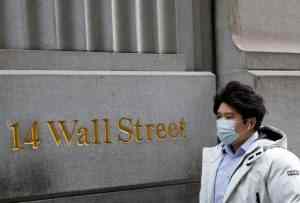

Those interested in learning more about the trading ranges and other financial topics may want to consider enrolling in one of the best technical analysis courses currently available. Every financial market has periods when prices display sideways price action. Range trading is a strategy used by traders to take advantage of opportunities in markets with no clearly defined trends.

When a stock breaks through or falls below its trading range, it usually means there is momentum building. A breakout occurs when the price of a security breaks above a trading range, while a breakdown happens when the price falls below a trading range. Typically, breakouts and breakdowns are more reliable when they are accompanied by a large volume, which suggests widespread participation by traders and investors. Analyzing trends in volume can help you validate patterns to determine if the timing might be right to use a range trading strategy. Technical analysts tend to believe that volume precedes price; to confirm any trend, volume should increase in the direction of the trend. A trading range marks the span from the high point and the low point of a security within a certain time period, such as a day or a month.
Learn to trade
This makes the strategy suitable for short-term traders who do not wish to leave their capital exposed to the market for more extended periods. Most traders place stop-loss points just above the upper and lower trendlines to mitigate the risk of heavy losses from a high volumebreakout or breakdown. Traders capitalize on range-bound trading by repeatedly buying at the support trendline and selling at the resistance trendline until the security breaks out from a price channel. A trading range might be used by some professional investors or day traders to try to time the market, and they might have a technical analysis process they believe in. However, for the average investor, timing the market and using technical analysis tends to not work very well.

The risks of loss from investing in CFDs can be substantial and the value of your investments may fluctuate. 75% of retail client accounts lose money when trading CFDs, with this investment provider. CFDs are complex instruments and come with a high risk of losing money rapidly due to leverage. You should consider whether you understand how this product works, and whether you can afford to take the high risk of losing your money. Typically, traders use range-bound trading in conjunction with other indicators, such as volume, in order to increase their odds of success. In this chart, a trader might have noticed that the stock was starting to form a price channel in late November and early December.
Trading Range Strategies
Thus, volatility indicators can help qualify markets where range trading strategies can be implemented. With range trading, volume indicators can also help watch out for valid price breakouts. A trading range occurs when a security trades between consistent high and low prices for a period of time. The top of a security’s trading range often provides price resistance, while the bottom of the trading range typically offers price support.
The information in this site does not contain investment advice or an investment recommendation, or an offer of or solicitation for transaction in any financial instrument. IG International Limited is licensed to conduct investment business and digital asset business by the Bermuda Monetary Authority. Stay on top of upcoming market-moving events with our customisable economic calendar.
It is, therefore, important to determine the ideal places to put in place stop losses that will help limit your losses in case a price breakout occurs. Range trading strategies help investors exploit lucrative opportunities when there is sideways price action in the market. Markets oscillate between trends and ranges, and it is essential to have effective strategies to take advantage of trading opportunities during different market conditions. For example, a trader could enter a long position when the price of a stock is trading at support and the RSI gives an oversold reading below 30. Alternatively, the trader may decide to open a short position when the RSI moves into overbought territory above 70.
For instance, the ADX will confirm a breakout with a reading above 25, whereas the bands of envelop-type indicators will diverge when high volatility returns to the market. Some of the best volume indicators to use when trading range-bound markets include On Balance Volume , Volume Price Trend , Money Flow Index , Accumulation/Distribution, and Negative Volume Index . Still, traders can make it even more effective by combining it with Oscillators, such as RSI, or Candlestick Patterns, such as Pin Bars and Double Tops/Bottoms. On the other hand, when the price is at or near support levels, the principle is to look for opportunities to place sell orders. Support levels serve as optimal price target areas when sell orders are placed. This information has been prepared by IG, a trading name of IG Markets Limited.
Pros and Cons of Range Trading
He is a CFA charterholder as well as holding FINRA Series 7, 55 & 63 licenses. He currently researches and teaches economic sociology and the social studies of finance at the Hebrew University in Jerusalem. In this case, we can see that the Bollinger Bands are contracted, as the price is just moving within a tight range. However, when bands start to expand, volatility is increasing and more movement of price in one direction is likely.
Markets vacillate between trending, or range expansion periods and non-trending, or range contraction periods. So the first task of the trader is to determine whether the market is in a trend or not in the time frame they’re interested in trading. You can apply range trading strategies to most investments, including stocks, bonds, closed-end funds, ETFs, and more. Range trading is an active investing strategy that identifies a range at which the investor buys and sells at over a short period. For example, a stock is trading at $35 and you believe it is going to rise to $40, then trade in a range between $35 and $40 over the next several weeks.
For example, a trader might buy a stock if it breaks above its opening trading range. To correctly interpret price charts and trade successfully, traders must identify and measure the support and resistance’s strength. A downtrend can be interrupted or reversed at the support level where the buying is strong.
A Must-ReadeBook for Traders
Within a single trading day, for example, a security will often move up and down a bit, and the difference between the high and low points is the trading range. You could also look at a stock’s high compared to its low during a longer trading range, such as a year. With Bollinger Bands, the slope of the moving average that runs through the middle of the bands can be monitored to determine if the market is range-bound. Trading range occurs when price actions consistently bounce between established highs and lows for a certain period. When a strong pivot points line has been breached, traders can adapt to a strategy in tandem with the new market condition.
Volume is one of the most essential elements of an asset’s price that range traders watch. The inherent belief for technical analysts is that volume precedes price, and when applying range trading strategies, volume can help traders qualify high probability setups. In a range-bound market, these lines allow traders to observe support and resistance levels in the market and determine ideal areas to place entry and exit orders. For instance, if the price is trading between R1 and PP, traders can look to buy at or near PP and sell at or near R1. Similarly, when selling at R1, stop loss can be placed above R2 and take profit at PP.
Ranges and Volatility
If you think you’ve identified a range bound trade, you might consider placing a buy order close to a price level that you’ve identified as a support price. To complete the trade, you would consider placing an order near a price level that you’ve identified as a resistance price level. These support and resistance levels may be a moving average or some other price level that you’ve identified as significant. Given that range trading entails market timing, which is exceedingly difficult, you might consider placing a stop limit order to sell at some percentage below the price that you bought at . Nonetheless, range trading strategies are not ideal for all market conditions or even in all ranging markets.
For example, tradable instruments with fixed income demonstrate a smaller trading range than commodities and equities with high price volatility. Price behavior can be construed as a distribution that moves toward or away from its average price over time. The moving average is the most popular method used to establish the market’s average price. Essentially, the slope of the moving average is monitored to confirm the occurrence of a trading range. There are also envelope-type volatility indicators such as Bollinger Bands and Keltner Channel computed to ‘contain’ price. Such indicators will have the price contained within their upper and lower bands, serving as references for support and resistance levels.
When trading range-bound stocks and other instruments, it is also imperative to be wary of potential breakouts. Ranges typically happen during a period of indecision in the market or when a trend is pausing. If a trader is looking to trade a breakout, then other indicators can be used to help identify whether the breakout will continue. A significant increase in volume on a breakout, either higher or lower, would tend to suggest that the change in price action will continue. Traders use a variety of technical indicators, such as volume and price action, in order to enter or exit a trading range.
Trying to time the market based on the trading range for a certain period is a risky strategy that could incur losses you may not otherwise experience through long-term investing. Investors who intend to profit from range-bound trading go for instruments with lower volatility since higher volatility indicates turmoil in the market. A high price serves as a major resistance level in a range-bound market, which can be considered a ceiling for price action and cannot be broken. Several factors influence the prices of securities, such as the type of security and the sector where the security operates.